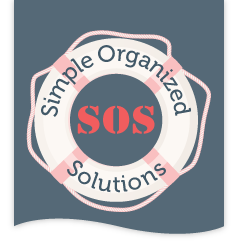 What’s in your garage? Do you have garden tools, lawn care equipment, sporting equipment, boxes of who knows what that won’t fit in your house? Does your car have to stay in the driveway because it won’t fit in the garage? If the answer to any of these questions is a resounding YES, then maybe it’s time to organize your garage.
What’s in your garage? Do you have garden tools, lawn care equipment, sporting equipment, boxes of who knows what that won’t fit in your house? Does your car have to stay in the driveway because it won’t fit in the garage? If the answer to any of these questions is a resounding YES, then maybe it’s time to organize your garage.
The garage can become a catchall for stuff that hasn’t been assigned a home or that you intend to put away later, then you get busy with something else and forget. A lot of people use the garage for storage and never intended it to be used to house their vehicles. That’s fine if you are short on space and need more storage, but if isn’t organized, you end up buying duplicates because you can’t find something, or just spend a lot of time trying to find the item you’re looking for.
The Plan
The first thing to do is a little planning. A garage can typically take a weekend to clear and organize depending on how big it is, how much stuff you have, and how many team members will participate. Your team can be your family or friends. Get the whole family involved. I bet everyone in your family has some of their things in there. If you’re single, ask some friends to help and reciprocate by helping them with their garage or basement organizing project. Schedule an upcoming weekend that is open on yours and your team member’s calendars. You may want to choose another date as a backup weekend in case it rains. Schedule it to begin in the morning to allow enough time throughout the day to finish the steps you planned for the day. You can use the first day to sort and purge, then the next day to assign homes and containerize. Make sure to schedule in breaks and lunch for both days. Let all the team members know the plan when you create the schedule, and review it before you begin.
Day 1 – Sort & Purge
Remove everything from the garage and group like items together. Use areas of the driveway, patio or lawn for the categories. You can make a game out of this step to make it fun for the kids. For example, see how many toys they can find in 15 minutes. Or how many sporting equipment items they can find in 10 minutes. One of the categories may be items that belong in the house that never managed to get past the garage. When all the items are sorted, the next step is to purge. Discard all broken items, or things that you no longer need, use or like. Consider recycling or donating before you send something to a landfill. The goal is to reduce the amount of ‘keepers’ so they are proportionate to the amount of available storage space. For the items that belong in the house, bring them inside and put them in their assigned spaces. At the end of the day you will need to move the keepers back in the garage in their categories for safekeeping overnight.
Day 2 – Assign Homes & Containerize
Take a look at your empty garage and the storage that you have available. Storage comes in all shapes and sizes. Shelf units, bins such as plastic containers, empty trash cans, flower pots or baskets, free-standing racks, built-in shelves, and peg boards make for great storage in a garage. Use what you have on hand first, in the garage and then inside your house. Purchase additional storage only after you have exhausted all available possibilities at home. Be sure to measure bins and spaces to make sure the storage item will fit in the space. Create zones for each activity and their respective items. These zones will most likely be the categories you determined when you were sorting on day 1. Some typical zones include lawn & garden tools and equipment, sporting equipment, auto care & tools, plant food & insecticides. Assign homes and containerize based on your zones. As you organize your things in their zones, keep the following tips in mind.
- Make sure you have enough room to open car doors when storing items against the garage walls.
- Use large plastic garbage cans to store garden hoses.
- Use peg board to hang small hand tools in the garage or shed. Draw an outline around each tool so there’s no mistake where to put it back.
- Store combustibles on the floor in a shed or on the ground of a covered area away from the house.
- Store toxic chemicals on a shelf at eye level with the labels facing front, to mitigate risk of spillage from reaching on a shelf that’s too high up.
- Store garden hand tools in a bucket of sand mixed with some motor oil to keep them clean.
- Store lighter items and infrequently used items on higher shelves.
- If storage is tight, think vertical. Racks for bicycles and ladders that mount on the wall of the garage are great space savers.
That should do it. Now don’t you feel better? You can fit the vehicles in the garage and find the things you need when you need them. And it only took a weekend to do it!


